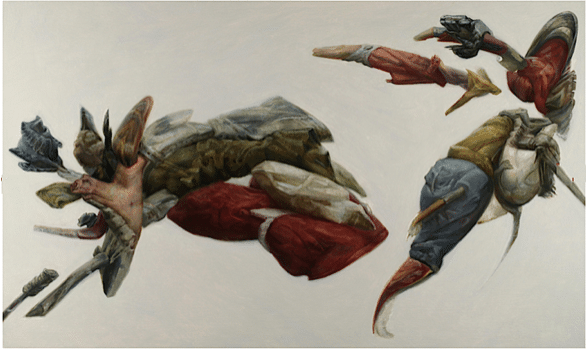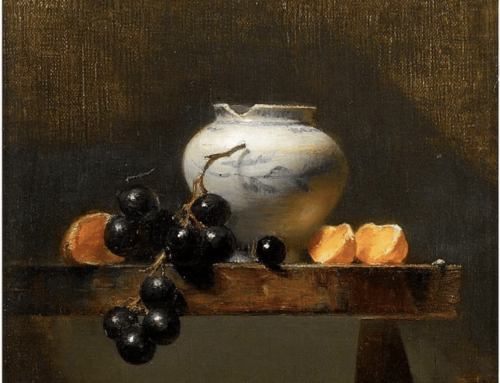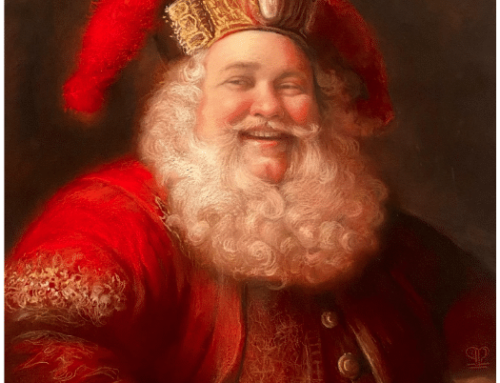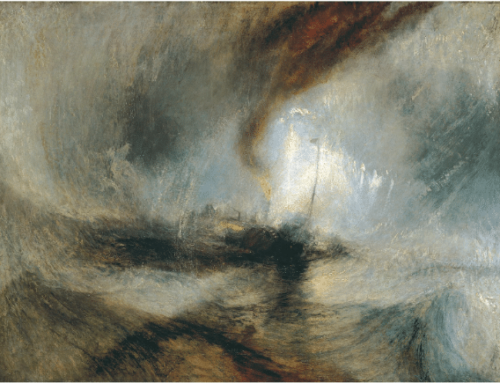Look too long at Cesar Santos’ newest paintings and you risk feeling something akin to those myths and fairytales where someone who’s enjoying a meal is told they’ve been unknowingly eating human flesh.
Milan’s gallery Robilant-Voena is currently hosting “Cesar Santos: InFormal,” the artist’s first solo exhibition in Europe. The show marks a pivotal moment in this painter’s career, launching a new body of work in an innovative, highly unique style that Santos has spent the last year developing.
Santos in these paintings moves well beyond the representational portraiture that has been the core of his oeuvre. The works in this exhibition appear simultaneously familiar, evoking the aesthetics of the Old Masters, and unrecognizable, comprised of indeterminate forms that surface, shift, coalesce, and morph again throughout compositions reminiscent of Renaissance frescos and Baroque or Mannerist paintings.
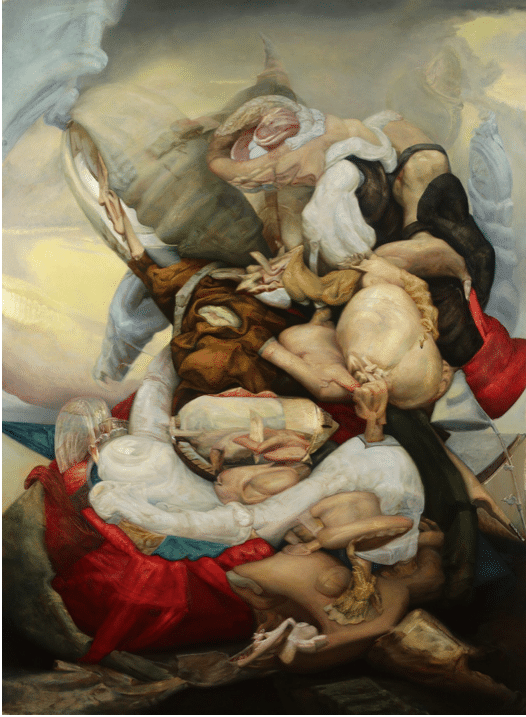
Cesar Santos, Special Period, 2023, oil on linen, 200 x 142 cm
Though the style feels traditional, Santos’ brush conjures entirely “new objects,” in his words. Santos’ amalgamated subjects hail from an alternate reality operating under strange laws, where flux is the only constant and “naught may endure but mutability,” as the poet Shelley wrote.
“The materiality of the paint and the canvas becomes an eco-system of relationships, representing colors, space and solidity with their potentiality in motion,” Santos says. “I make new objects communicate in their environment, becoming stories of the visual system with open possibilities.’
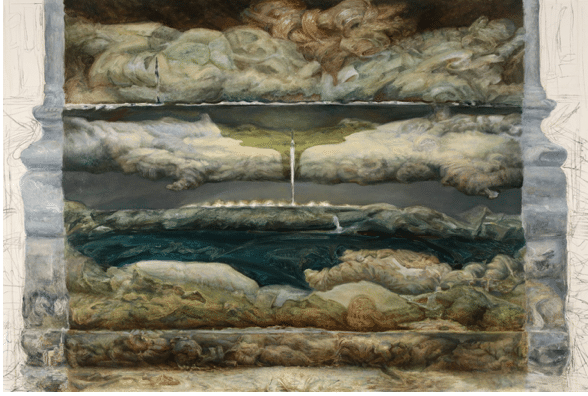
Cesar Santos, Corridor, oil on linen, 96 x 140 cm
These are challenging paintings, works that demand the kind of sustained “slow looking” and thinking rarely practiced in our twenty-first century world.
It’s not so much a case of “nothing is quite what it seems” as it is nothing is any one thing. A bulbous, flesh-pink object is surely a severed hand and an internal organ – and it is also a wadded-up leotard and a misshapen lump of clay. A chunk of paint that resembles a horse’s jawbone full of teeth is also a half-buried branch as well as a track in the mud.
This degree of what we might call “objective ambiguity” is rare in representational painting. It’s not that what you at first take to be a cloven hoof turns out to be some kind of hand-carved ceremonial object – it’s that it was never actually a hoof to begin with; and the “leg” it is attached to, for that matter, was always just a bundle of some oddly shaped thing wrapped in red-orange silk. At the same time, of course, it was clearly a flayed limb.
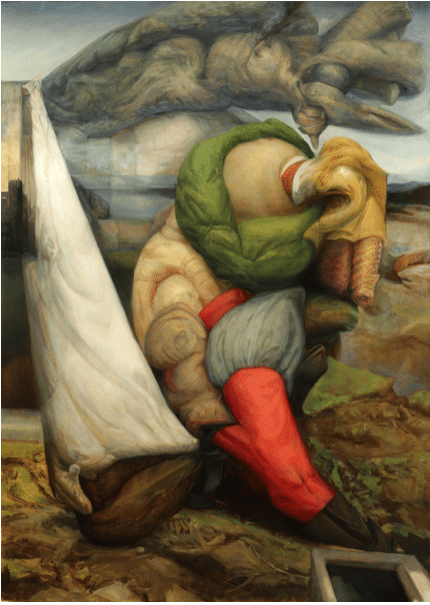
Cesar Santos, One’s Message, 2022, oil on linen, 140 x 100 cm
A news release attempts to explain the strangeness at the heart of this work by pointing out that Santos’ “inspirations” are “drawn from the more awkward or subversive corners of art history, such as Old Masters who were the eccentrics of their era, such as Giuseppe Arcimboldo, or those whose style was at odds with conventional beauty, such as El Greco or Francisco Goya. Further, his paintings take influence from the fleshy forms of Peter Paul Rubens and the expressive grandeur of Michelangelo and Raphael.”
The thing is, you could say the same thing about a lot of work that looks nothing like this. It’s simply very difficult to characterize Santos’ newest work or situate it comfortably within the context of either contemporary or historical art.
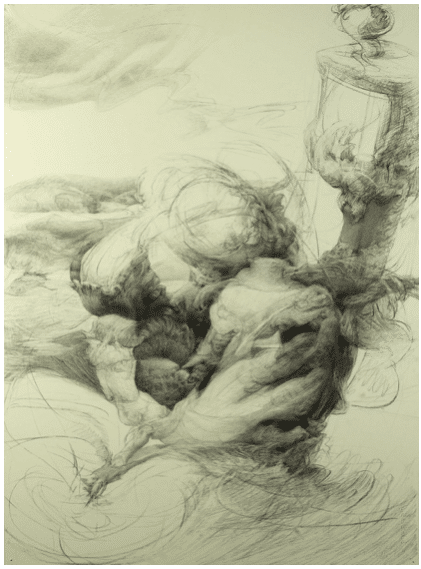
Cesar Santos, H Major, 2022, charcoal on paper, 77 x 56 cm
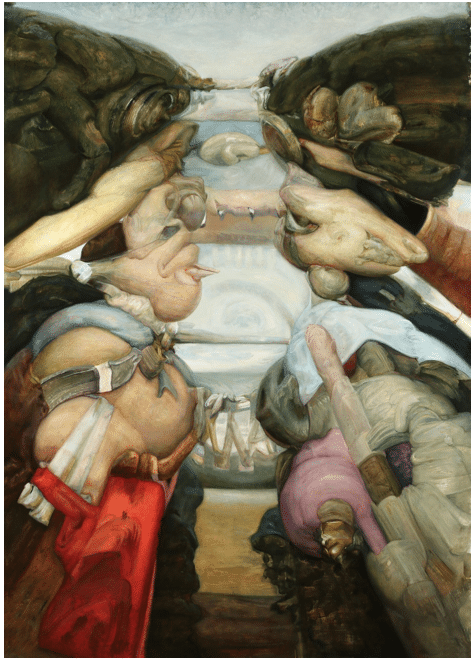
Cesar Santos, Open House, 2023, oil on linen, 200 x 142 cm
Cesar Santos has a variety of art video workshops available through PaintTube.tv, including:
- Secrets of Portrait Painting (in English and Spanish)
- Secrets of Figure Painting
- Secrets of Figure Drawing
- Let Cesar Santos teach you how to paint: Start here
View more artist and collector profiles here at FineArtConnoisseur.com.
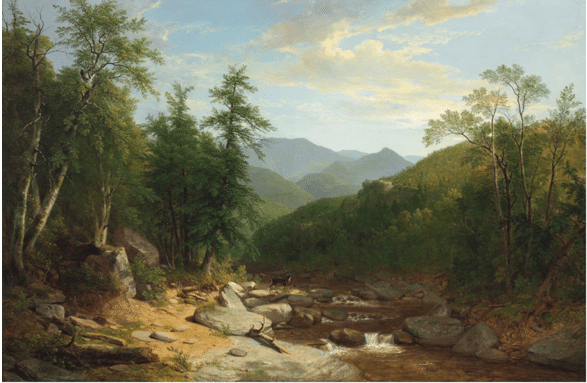
Asher Durand, A Mountain Stream in the Adirondacks, c. 1870
From its earliest exploration, the region of New York’s Adirondack Mountains has beguiled artists lured by the pure enchantment of its natural beauty.
Though tourists flocked to the famed Saratoga Springs as early as the 1830s, few ventured further north into the forbidding chain of granite peaks visible from Lake George, which one period guidebook described as “a wild repulsive aspect.” That perspective didn’t last long, though.
First one or two then eventually dozens of painters fell in love with the region including household “Hudson River” names such Thomas Cole, Asher B. Durand, and John Frederick Kensett.
These artists, however, only painted studies – not finished paintings – on location. It was back in their New York studios that the studies and sketches they made became the sizable salon-style works which astonished the 19th century public. All that’s changed now, of course, and the region is a hotbed for plein air painters starved for marvelous views.
Artists adore the Adirondacks for their rugged natural beauty. The region currently hosts Fall Color Week (September 29 – October 6, 2023), an annual event that has become so popular that there’s a waiting list. For more information (or to join the waiting list) go here.

